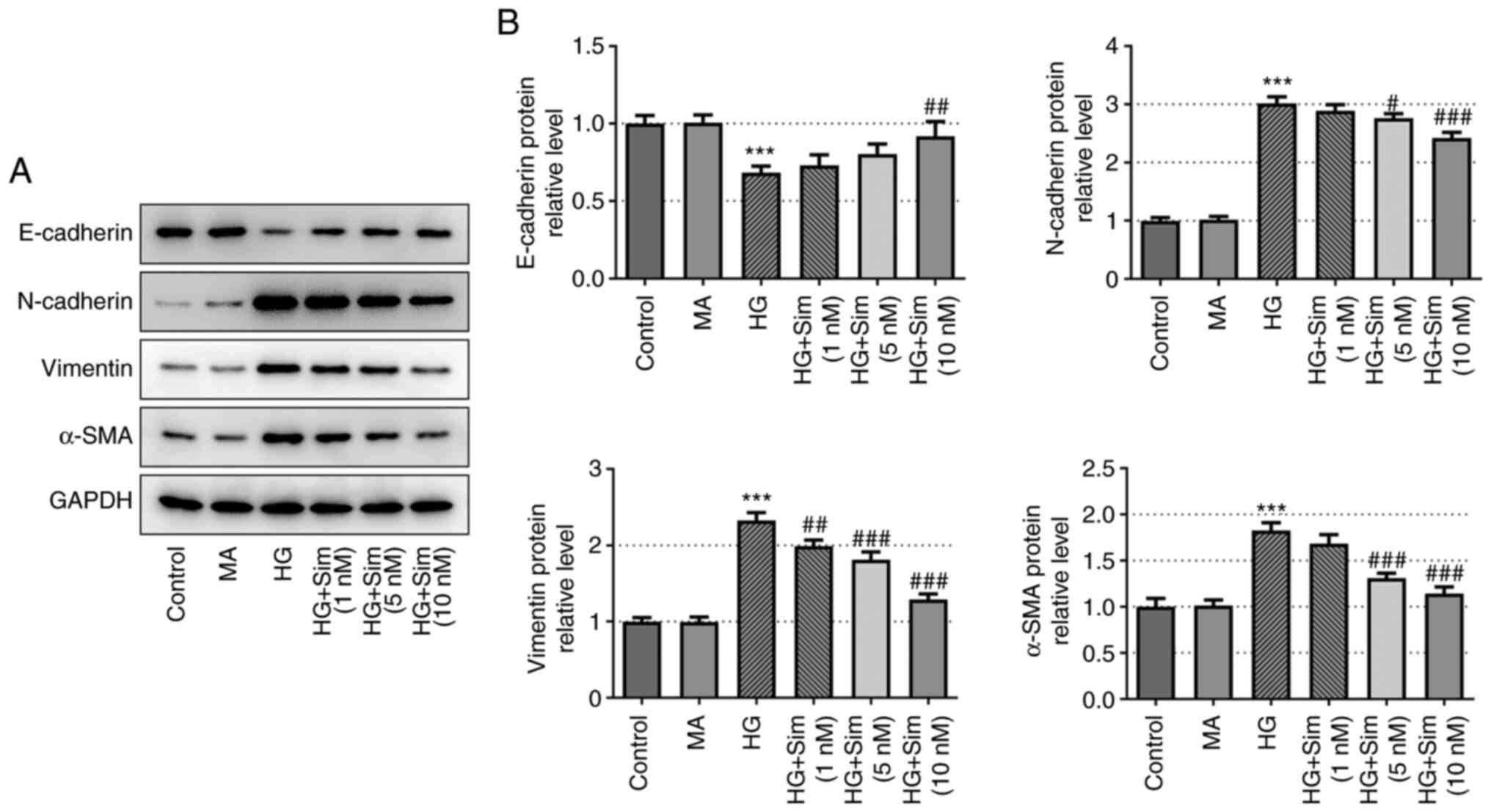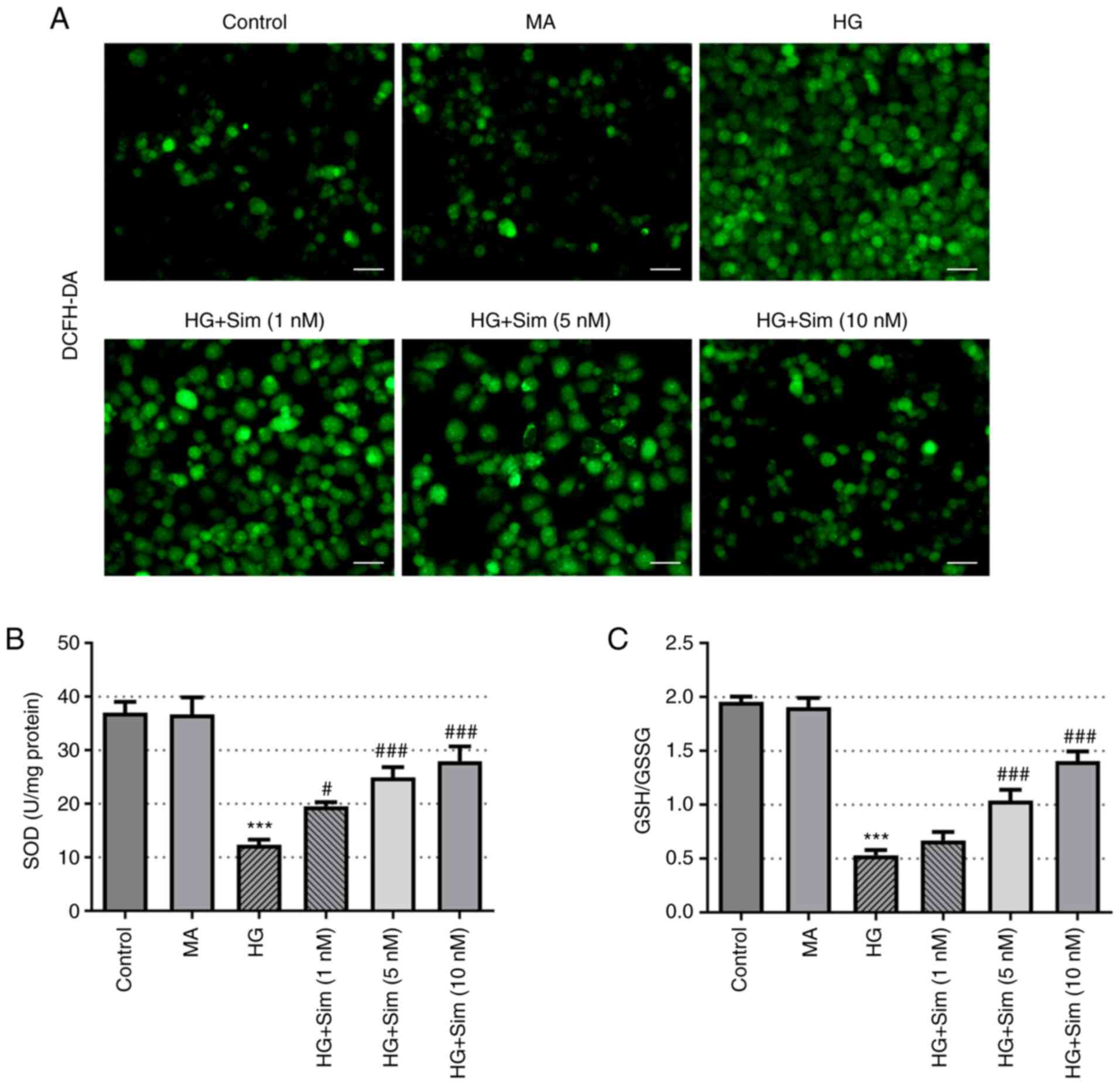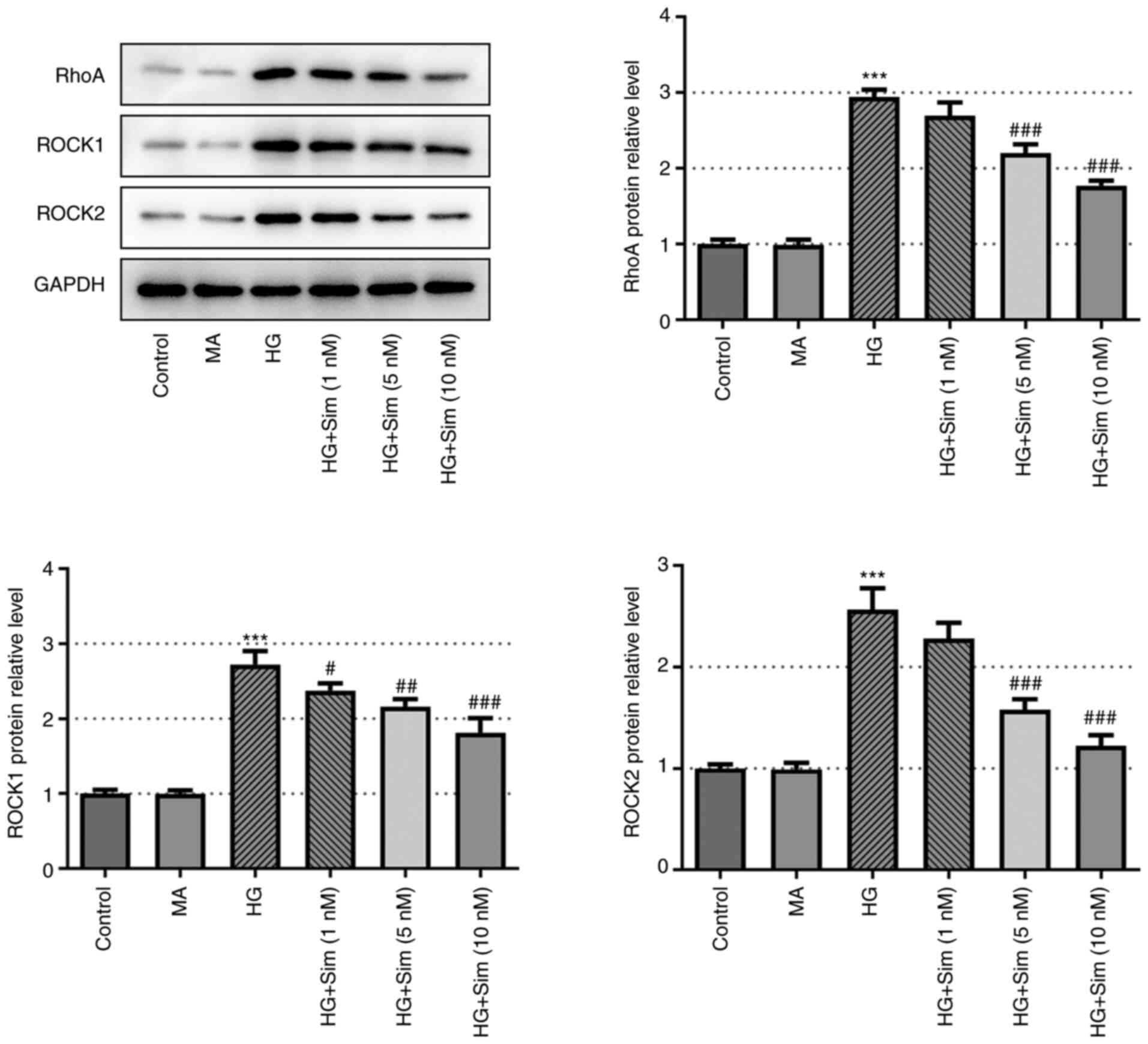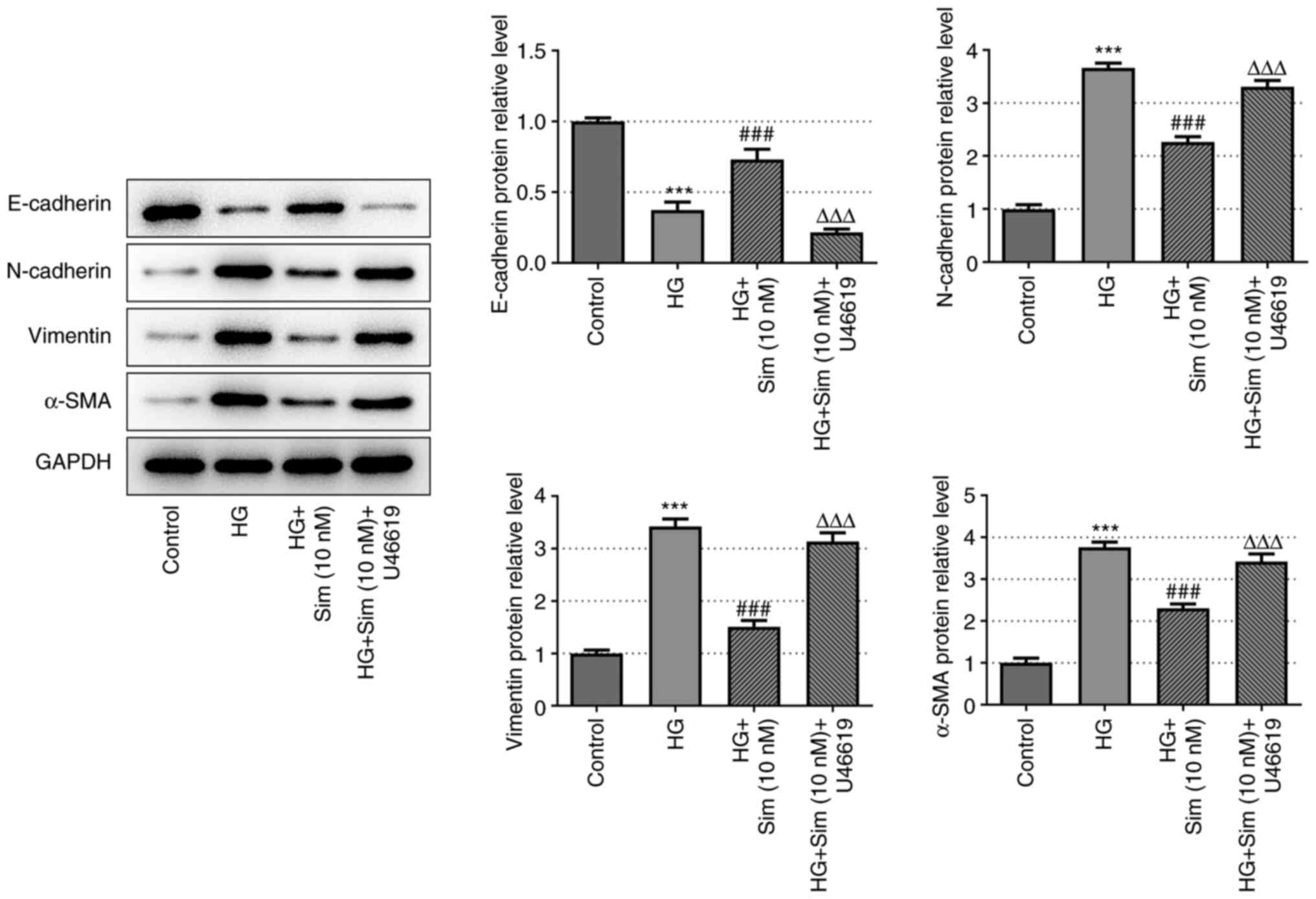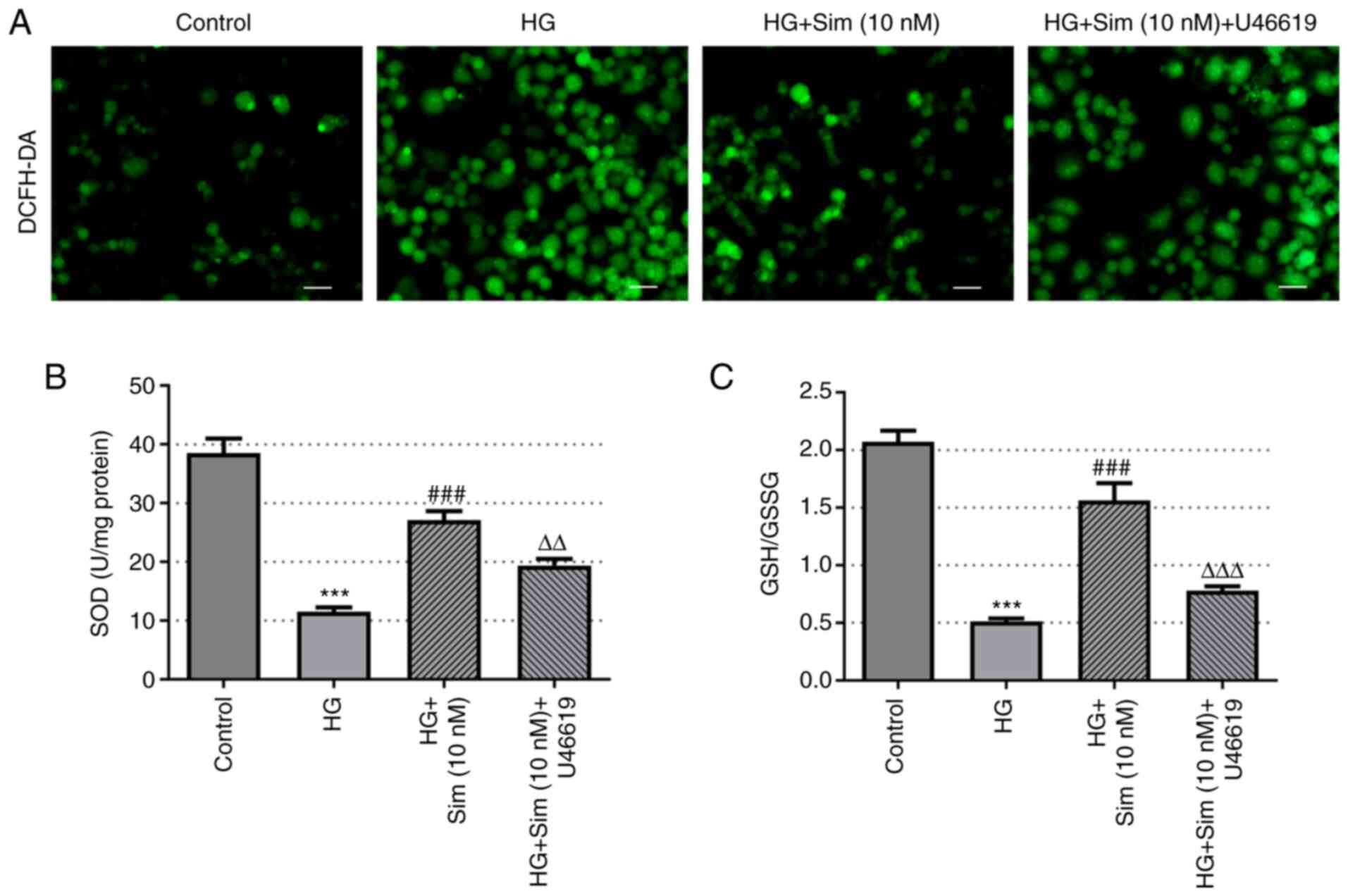|
1
|
Cole JB and Florez JC: Genetics of
diabetes mellitus and diabetes complications. Nat Rev Nephrol.
16:377–390. 2020.PubMed/NCBI View Article : Google Scholar
|
|
2
|
Ye W, Ma J, Wang F, Wu T, He M, Li J, Pei
R, Zhang L, Wang Y and Zhou J: LncRNA MALAT1 regulates miR-144-3p
to facilitate epithelial-mesenchymal transition of lens epithelial
cells via the ROS/NRF2/Notch1/snail pathway. Oxid Med Cell Longev.
2020(8184314)2020.PubMed/NCBI View Article : Google Scholar
|
|
3
|
Sreedharan R and Abdelmalak B: Diabetes
mellitus: Preoperative concerns and evaluation. Anesthesiol Clin.
36:581–597. 2018.PubMed/NCBI View Article : Google Scholar
|
|
4
|
Panozzo G, Staurenghi G, Dalla Mura G,
Giannarelli D, Alessio G, Alongi S, Appolloni R, Baldascino A,
Boscia F, Caporossi A, et al: Prevalence of diabetes and diabetic
macular edema in patients undergoing senile cataract surgery in
Italy: The DIabetes and CATaract study. Eur J Ophthalmol.
30:315–320. 2020.PubMed/NCBI View Article : Google Scholar
|
|
5
|
Andley UP: The lens epithelium: Focus on
the expression and function of the alpha-crystallin chaperones. Int
J Biochem Cell Biol. 40:317–323. 2008.PubMed/NCBI View Article : Google Scholar
|
|
6
|
Gong W, Zhu G, Li J and Yang X: LncRNA
MALAT1 promotes the apoptosis and oxidative stress of human lens
epithelial cells via p38MAPK pathway in diabetic cataract. Diabetes
Res Clin Pract. 144:314–321. 2018.PubMed/NCBI View Article : Google Scholar
|
|
7
|
Peterson SR, Silva PA, Murtha TJ and Sun
JK: Cataract surgery in patients with diabetes: Management
strategies. Semin Ophthalmol. 33:75–82. 2018.PubMed/NCBI View Article : Google Scholar
|
|
8
|
Kelkar A, Kelkar J, Mehta H and Amoaku W:
Cataract surgery in diabetes mellitus: A systematic review. Indian
J Ophthalmol. 66:1401–1410. 2018.PubMed/NCBI View Article : Google Scholar
|
|
9
|
Fattah TA, Saeed A and Shehzadi SA:
Synthetic approaches towards antihypercholesterolemic drug
simvastatin. Curr Org Synth. 16:652–670. 2019.PubMed/NCBI View Article : Google Scholar
|
|
10
|
Liu A, Wu Q, Guo J, Ares I, Rodríguez JL,
Martínez-Larrañaga MR, Yuan Z, Anadón A, Wang X and Martínez MA:
Statins: Adverse reactions, oxidative stress and metabolic
interactions. Pharmacol Ther. 195:54–84. 2019.PubMed/NCBI View Article : Google Scholar
|
|
11
|
Al-Rasheed NM, Al-Rasheed NM, Hasan IH,
Al-Amin MA, Al-Ajmi HN, Mohamad RA and Mahmoud AM: Simvastatin
ameliorates diabetic cardiomyopathy by attenuating oxidative stress
and inflammation in rats. Oxid Med Cell Longev.
2017(1092015)2017.PubMed/NCBI View Article : Google Scholar
|
|
12
|
E L and Jiang H: Simvastatin protects high
glucose-induced H9c2 cells from injury by inducing autophagy. Pharm
Biol. 58:1077–1084. 2020.PubMed/NCBI View Article : Google Scholar
|
|
13
|
Al-Rasheed NM, Al-Rasheed NM, Bassiouni
YA, Hasan IH, Al-Amin MA, Al-Ajmi HN and Mahmoud AM: Simvastatin
ameliorates diabetic nephropathy by attenuating oxidative stress
and apoptosis in a rat model of streptozotocin-induced type 1
diabetes. Biomed Pharmacother. 105:290–298. 2018.PubMed/NCBI View Article : Google Scholar
|
|
14
|
Harris ML, Bron AJ, Brown NA, Keech AC,
Wallendszus KR, Armitage JM, MacMahon S, Snibson G and Collins R:
Absence of effect of simvastatin on the progression of lens
opacities in a randomised placebo controlled study. Oxford
cholesterol study group. Br J Ophthalmol. 79:996–1002.
1995.PubMed/NCBI View Article : Google Scholar
|
|
15
|
Zhang Z, Yao K and Jin C: Apoptosis of
lens epithelial cells induced by high concentration of glucose is
associated with a decrease in caveolin-1 levels. Mol Vis.
15:2008–2017. 2009.PubMed/NCBI
|
|
16
|
Qiu Y, Chen WY, Wang ZY, Liu F, Wei M, Ma
C and Huang YG: Simvastatin attenuates Neuropathic pain by
inhibiting the RhoA/LIMK/cofilin pathway. Neurochem Res.
41:2457–2469. 2016.PubMed/NCBI View Article : Google Scholar
|
|
17
|
Sun Z, Wu X, Li W, Peng H, Shen X, Ma L,
Liu H and Li H: RhoA/rock signaling mediates peroxynitrite-induced
functional impairment of Rat coronary vessels. BMC Cardiovasc
Disord. 16(193)2016.PubMed/NCBI View Article : Google Scholar
|
|
18
|
Yan Q, Wang X, Zha M, Yu M, Sheng M and Yu
J: The RhoA/ROCK signaling pathway affects the development of
diabetic nephropathy resulting from the epithelial to mesenchymal
transition. Int J Clin Exp Pathol. 11:4296–4304. 2018.PubMed/NCBI
|
|
19
|
Zhu L, Wang W, Xie TH, Zou J, Nie X, Wang
X, Zhang MY, Wang ZY, Gu S, Zhuang M, et al: TGR5 receptor
activation attenuates diabetic retinopathy through suppression of
RhoA/ROCK signaling. FASEB J. 34:4189–4203. 2020.PubMed/NCBI View Article : Google Scholar
|
|
20
|
Korol A, Taiyab A and West-Mays JA:
RhoA/ROCK signaling regulates TGFβ-induced epithelial-mesenchymal
transition of lens epithelial cells through MRTF-A. Mol Med.
22:713–723. 2016.PubMed/NCBI View Article : Google Scholar
|
|
21
|
Serra N, Rosales R, Masana L and Vallvé
JC: Simvastatin increases fibulin-2 expression in human coronary
artery smooth muscle cells via RhoA/Rho-kinase signaling pathway
inhibition. PLoS One. 10(e0133875)2015.PubMed/NCBI View Article : Google Scholar
|
|
22
|
Ohsawa M, Ishikura K, Mutoh J and Hisa H:
Involvement of inhibition of RhoA/Rho kinase signaling in
simvastatin-induced amelioration of neuropathic pain. Neuroscience.
333:204–213. 2016.PubMed/NCBI View Article : Google Scholar
|
|
23
|
Quattrini L and La Motta C: Aldose
reductase inhibitors: 2013-Present. Expert Opin Ther Pat.
29:199–213. 2019.PubMed/NCBI View Article : Google Scholar
|
|
24
|
Shastri GV, Thomas M, Victoria AJ,
Selvakumar R, Kanagasabapathy AS, Thomas K and Lakshmi :
Effect of aspirin and sodium salicylate on cataract development in
diabetic rats. Indian J Exp Biol. 36:651–657. 1998.PubMed/NCBI
|
|
25
|
Cho YE, Moon PG, Lee JE, Singh TS, Kang W,
Lee HC, Lee MH, Kim SH and Baek MC: Integrative analysis of
proteomic and transcriptomic data for identification of pathways
related to simvastatin-induced hepatotoxicity. Proteomics.
13:1257–1275. 2013.PubMed/NCBI View Article : Google Scholar
|
|
26
|
Lundh BL and Nilsson SE: Lens changes in
matched normals and hyperlipidemic patients treated with
simvastatin for 2 years. Acta Ophthalmol (Copenh). 68:658–660.
1990.PubMed/NCBI View Article : Google Scholar
|
|
27
|
Song XL, Li MJ, Liu Q, Hu ZX, Xu ZY, Li
JH, Zheng WL, Huang XM, Xiao F, Cui YH and Pan HW:
Cyanidin-3-O-glucoside protects lens epithelial cells against high
glucose-induced apoptosis and prevents cataract formation via
suppressing NF-κB activation and Cox-2 expression. J Agric Food
Chem. 68:8286–8294. 2020.PubMed/NCBI View Article : Google Scholar
|
|
28
|
Deng Z, Jia Y, Liu H, He M, Yang Y, Xiao W
and Li Y: RhoA/ROCK pathway: Implication in osteoarthritis and
therapeutic targets. Am J Transl Res. 11:5324–5331. 2019.PubMed/NCBI
|
|
29
|
Wei YH, Liao SL, Wang SH, Wang CC and Yang
CH: Simvastatin and ROCK inhibitor Y-27632 inhibit myofibroblast
differentiation of graves' ophthalmopathy-derived orbital
fibroblasts via RhoA-mediated ERK and p38 signaling pathways. Front
Endocrinol (Lausanne). 11(607968)2021.PubMed/NCBI View Article : Google Scholar
|
|
30
|
Rattan S: 3-Hydroxymethyl coenzyme A
reductase inhibition attenuates spontaneous smooth muscle tone via
RhoA/ROCK pathway regulated by RhoA prenylation. Am J Physiol
Gastrointest Liver Physiol. 298:G962–G969. 2010.PubMed/NCBI View Article : Google Scholar
|
|
31
|
Wong MJ, Kantores C, Ivanovska J, Jain A
and Jankov RP: Simvastatin prevents and reverses chronic pulmonary
hypertension in newborn rats via pleiotropic inhibition of RhoA
signaling. Am J Physiol Lung Cell Mol Physiol. 311:L985–L999.
2016.PubMed/NCBI View Article : Google Scholar
|
|
32
|
Zhang W, Yi B, Zhang K, Li A, Yang S,
Huang J, Liu J and Zhang H: 1,25-(OH)2D3 and
its analogue BXL-628 inhibit high glucose-induced activation of
RhoA/ROCK pathway in HK-2 cells. Exp Ther Med. 13:1969–1976.
2017.PubMed/NCBI View Article : Google Scholar
|
|
33
|
Yang T, Chen M and Sun T: Simvastatin
attenuates TGF-β1-induced epithelial-mesenchymal transition in
human alveolar epithelial cells. Cell Physiol Biochem. 31:863–874.
2013.PubMed/NCBI View Article : Google Scholar
|
|
34
|
Xie F, Liu J, Li C and Zhao Y: Simvastatin
blocks TGF-β1-induced epithelial-mesenchymal transition in human
prostate cancer cells. Oncol Lett. 11:3377–3383. 2016.PubMed/NCBI View Article : Google Scholar
|
|
35
|
Fan Z, Jiang H, Wang Z and Qu J:
Atorvastatin partially inhibits the epithelial-mesenchymal
transition in A549 cells induced by TGF-β1 by attenuating the
upregulation of SphK1. Oncol Rep. 36:1016–1022. 2016.PubMed/NCBI View Article : Google Scholar
|
|
36
|
Cano A, Pérez-Moreno MA, Rodrigo I,
Locascio A, Blanco MJ, del Barrio MG, Portillo F and Nieto MA: The
transcription factor snail controls epithelial-mesenchymal
transitions by repressing E-cadherin expression. Nat Cell Biol.
2:76–83. 2000.PubMed/NCBI View
Article : Google Scholar
|
|
37
|
Peluso I, Morabito G, Urban L, Ioannone F
and Serafini M: Oxidative stress in atherosclerosis development:
The central role of LDL and oxidative burst. Endocr Metab Immune
Disord Drug Targets. 12:351–360. 2012.PubMed/NCBI View Article : Google Scholar
|
|
38
|
Braakhuis AJ, Donaldson CI, Lim JC and
Donaldson PJ: Nutritional strategies to prevent lens cataract:
Current status and future strategies. Nutrients.
11(1186)2019.PubMed/NCBI View Article : Google Scholar
|
|
39
|
Han Q, Liu Q, Zhang H, Lu M, Wang H, Tang
F and Zhang Y: Simvastatin improves cardiac hypertrophy in diabetic
rats by attenuation of oxidative stress and inflammation induced by
calpain-1-mediated activation of nuclear factor-κB (NF-κB). Med Sci
Monit. 25:1232–1241. 2019.PubMed/NCBI View Article : Google Scholar
|
|
40
|
Zhao J, Zhang X, Dong L, Wen Y and Cui L:
The many roles of statins in ischemic stroke. Curr Neuropharmacol.
12:564–574. 2014.PubMed/NCBI View Article : Google Scholar
|
















